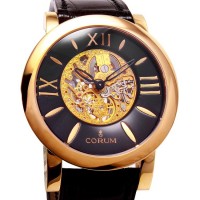 Jean-Baptiste Fabre is a Geneva-based art dealer and the founder of Auctionaftersale.com and Thirdman.auction.
Jean-Baptiste Fabre is a Geneva-based art dealer and the founder of Auctionaftersale.com and Thirdman.auction.
Auctionaftersale.com focuses on the aftersales market and gives unsold lots – and auction houses – a second chance by aggregating thousands of items updated daily in up to 90 different specialties including Contemporary Art, Design, Photography, Watches, Vintage etc. Users can bid for these exceptional items for a period of 10 days.
https://www.auctionaftersale.
Thirdman.auction provides bespoke bidding services and support. Before an auction, Thirdman.auction collects further information on a particular item and offers a range of services, including live auction representation to ensure that its clients’ interests are best served.
TAC: How did you come up with this concept?
If auction houses have taken the lead over galleries over the past years it is because they have managed to invigorate the art market and bring new life to the act of purchasing. The auction has become an event. Every part of the process gets media attention: what happens before, during and after the auction. Everything is orchestrated from the top of the rostrum where the auctioneer strikes the hammer like a virtuoso under the spotlight. It is an exhilarating and spectacular show!
On the flip side, Hiscox says that more than a third (37%) of fine art items fail to sell at auction across the world, leading to US$8 billion in lost revenue for auction houses. Managing aftersales requires a lot of energy, time and money. Many auction houses simply do not have the logistical capabilities or the time required to deal with unsold lots. They end up leaving the sellers of these lots without a solution.
Auction houses need to focus on their dynamic sales model. They must not offer an alternative to buyers other than live auction sales. Aftersales need to be outsourced. There is no alternative. Sending a contradictory message would kill the chemistry created during the auction by a crowd, a catalogue of lots and a hammer. 
TAC: Your goal is to address the ‘management of unsold items’. Can you explain the process to us?
We ask auction houses to communicate their results the evening or the day after the auction. It allows us to put all the lots they have failed to sell on our website: www.auctionaftersale.com. To recreate the time constraints of the auction model, lots are on offer for a maximum of 10 days where we apply the “First come, first served” model. This means that the first offer made on an aftersale is the one that will be treated first. The name of the auction house or the date of the auction do not appear on the website: aftersales are presented in different categories as we do not want to interfere in auction houses’ communication post-auction.
Aftersales are displayed as a photo wallpaper, and we carefully copy the exact description, authentication and picture of the item as it appeared in the original catalogue. We invite our clients to send us their questions and enquiries or to make offers. Once an offer is registered we send them to auction houses, a process which can take a few days. If the auction house accepts the offer, we introduce them to our client so they can bill him or her directly. We connect sellers and buyers and hold no stock ourselves, we are facilitators.
We do not ask auction houses for any exclusivity to provide this service.
TAC: How has Auction After Sale been received thus far in the art world?
We only launched the business six months ago. We communicate a lot to make ourselves known. We offer our services to every auction house. Our service does not cost them anything since we are not involved in any direct financial transaction. When auction houses accept the offer we send them, we then give them our clients’ details so they can bill them directly.
TAC: Which auction houses do you currently work with?
It depends on the offers we receive. We work in Europe a lot since it is where we can source most artworks. However, we increasingly work in the United States, in Hong Kong and in Australia.
TAC: Do you think there is a (online) market for individuals buying art works sight unseen?
I don’t think it: I know it for sure! eBay has managed in only two decades to introduce the concept of the auction to millions of consumers across the world by demystifying its mechanisms and making it fun. Our industry has to accept that a new generation of buyers is arriving in the auction market with its own rules and values.
TAC: Do you not think there will be a stigma against works that failed to sell in round one?
Auction houses communicate very discreetly on aftersales by unconsciously discrediting them and entertaining the collective idea that an object that has not sold is unwanted or that there is something wrong with it. 
In today’s day and age, where everything is recycled and we are constantly looking for new markets, Auction Aftersale is trying to change people’s perceptions, by presenting this dormant market as a fantastic source of opportunities.
Through this proposal, Auction Aftersale’s clients get to see the huge amount of aftersales looking for new owners differently. The seller gets multiple offers compared to none previously, both buyers and auction houses are happy.
TAC: Your motto is “The best deals for smart bargain hunters.” There have been several news items of individuals purchasing unbeknownst old masters on Ebay (for example) by chance. How does Auction After Sale compare to this stroke of luck for bargain hunters?
It’s not really about chance or luck in our industry. Yes discovering something for the first time may be down to pure luck, but imposing a discovery as authentic and interesting is another matter that requires experience and knowledge.
“Bargain hunters” are first and foremost ‘hunters’ – they snif out opportunities. They have this incredible ability to scan through masses of information and spot the right object, where others would fail to find anything and would be discouraged by the sheer volume of data. This is why to improve user experience and help bargain hunters and everyone else we present the aftersales in the clearest way possible on the website to optimise the visualisation of the thousands of lots we add daily to the website.
TAC: If I was a new or veteran collector, how would you convince me to use Auction After Sale?
I would just use one word: “Opportunities”! Every day Auction Aftersale gives you access to thousands of new lots, for all budgets. The secret of bargain hunters is that they spread their nets really wide. That is how they get to fish out amazing discoveries and will eventually get lucky. You have to be persistent. Anyone, rich or poor, can find a real gem like a ‘sleeper’.
We offer the world’s first aftersales aggregator, all filtered by speciality to save a lot of time and make it easier to find bargains.
TAC: What advice would you give to someone who is quite passionate about art but  has a very limited budget?
has a very limited budget?
Like I said previously, aftersales suit every budget and every taste. The magical word is in your question: “Passionate”! That is the key. When you are passionate you will take your time to understand, learn, look for bargains, to get some information and link it to another and discover a real find: your own treasure! This marvel you will display in your lounge all your life, and whose story you’ll share with your grandchildren.
TAC: What’s the difference between collectors and hoarders?
One is in for the long-term, while the other one is in for the shortest time possible! One is fulfilling a dream, the other one is looking for value. One, like Faust, finds comfort in the unique character of the objects of his or her collection. The other one, like Don Juan, multiplies conquests, illusions and disillusions, accumulates things, moves them around. He never becomes really attached to things and is never fulfilled. As soon as the objects are in his hands he will try to resell them, will negotiate the best price, and will not hesitate to sell them to the person offering them the most money.
TAC: Which artist, living or dead, would you most like to have known and why?
Francis Bacon has become one of art’s greatest. No one will contest the importance of his work, which year after year, breaks record after record at auction sales. As much as meeting the artist would have been fascinating, I do not regret it never happened because I find his work disturbing.
On the other hand, I regret never meeting Jean-Michel Basquiat. Especially since I was working for Sotheby’s in New York at the time. And that’s for the pretty good and simple reason that his work really moves me, I find the bold colours of his work really amazing. His art appeals to me more than any other of his contemporaries. Basquiat, you either love it or hate it, there’s no in-between. He has painted things that do not require interpretation by academics and experts to explain what it is and why it matters and generate a reaction, whether a really positive emotion or a total rejection.




 Saving...
Saving...